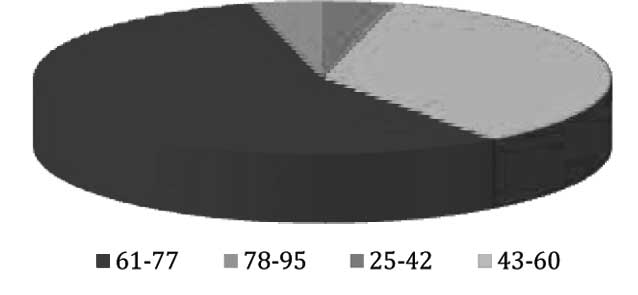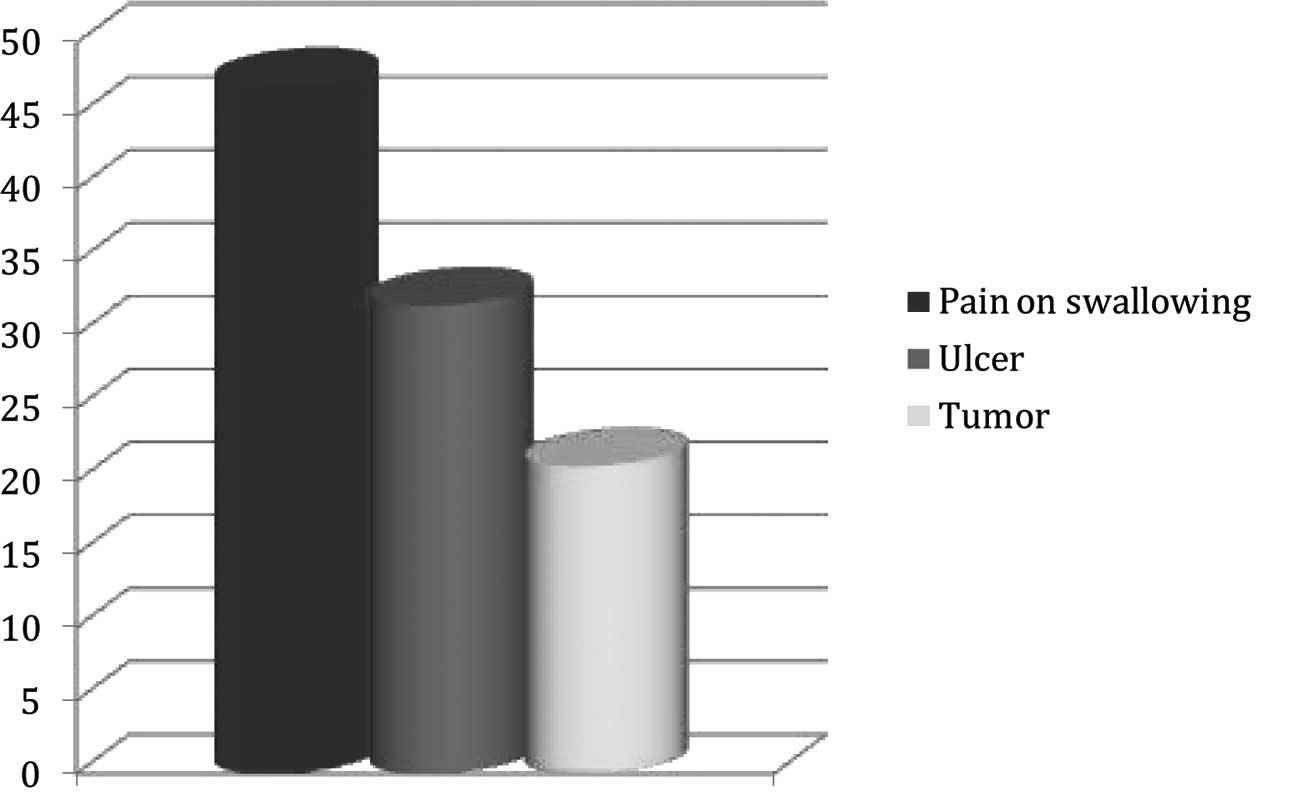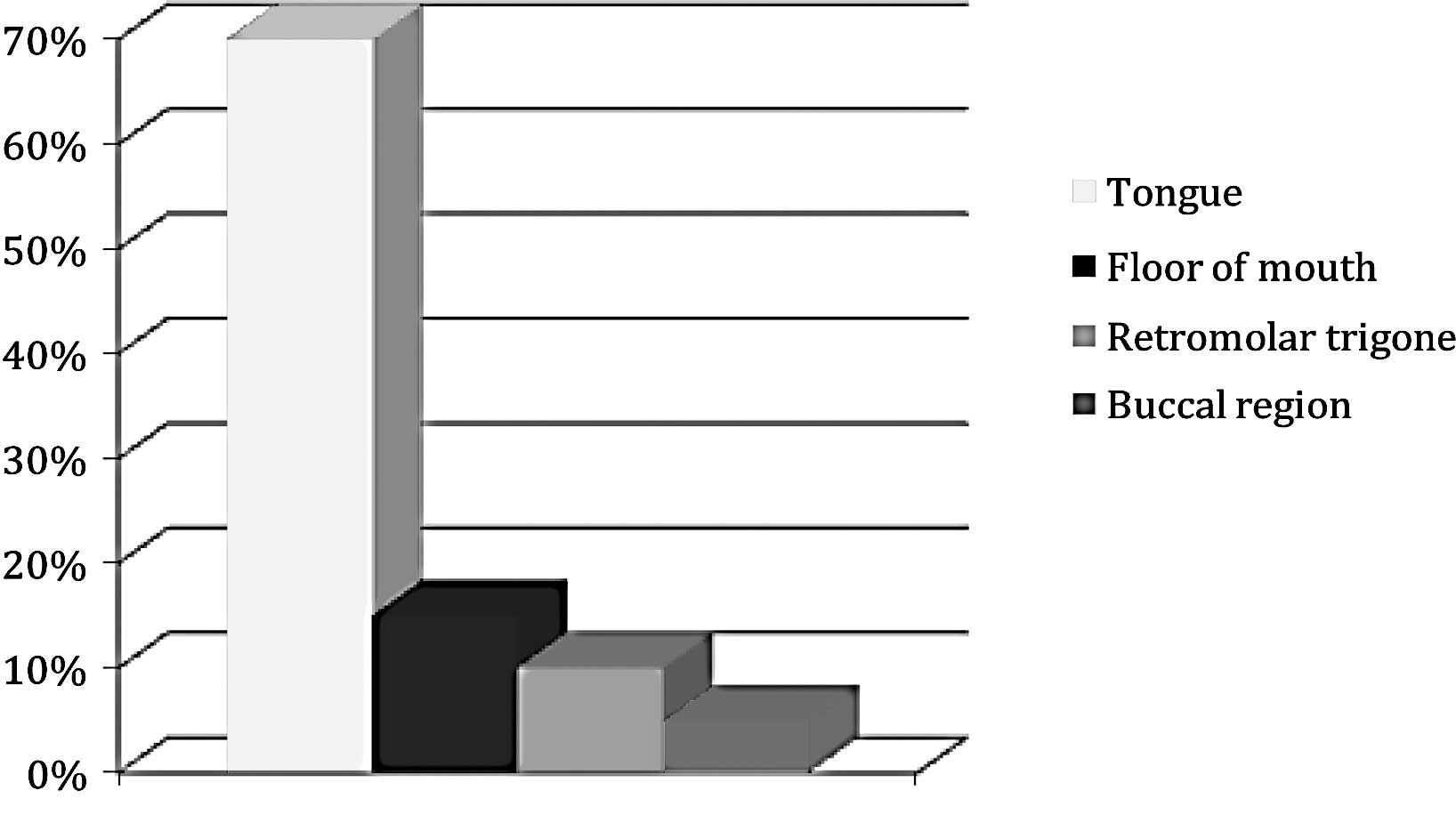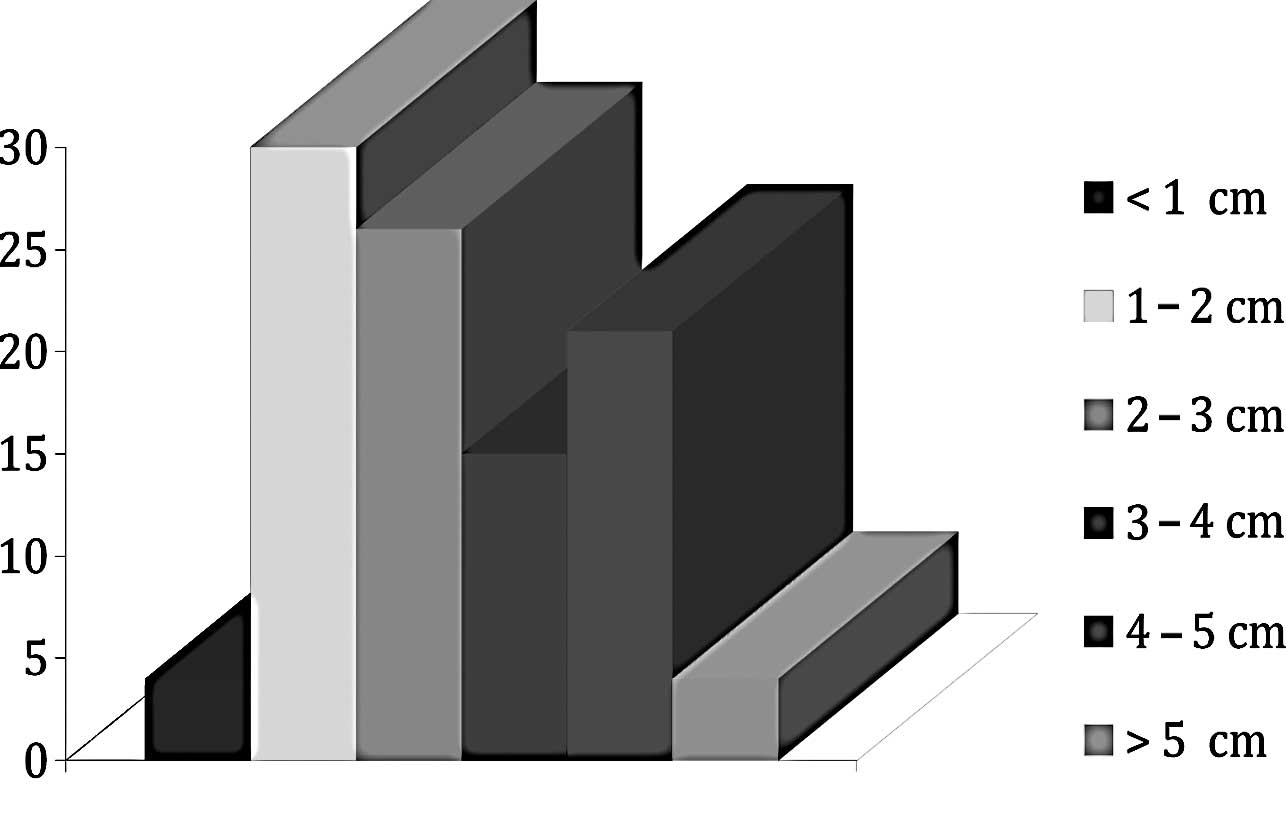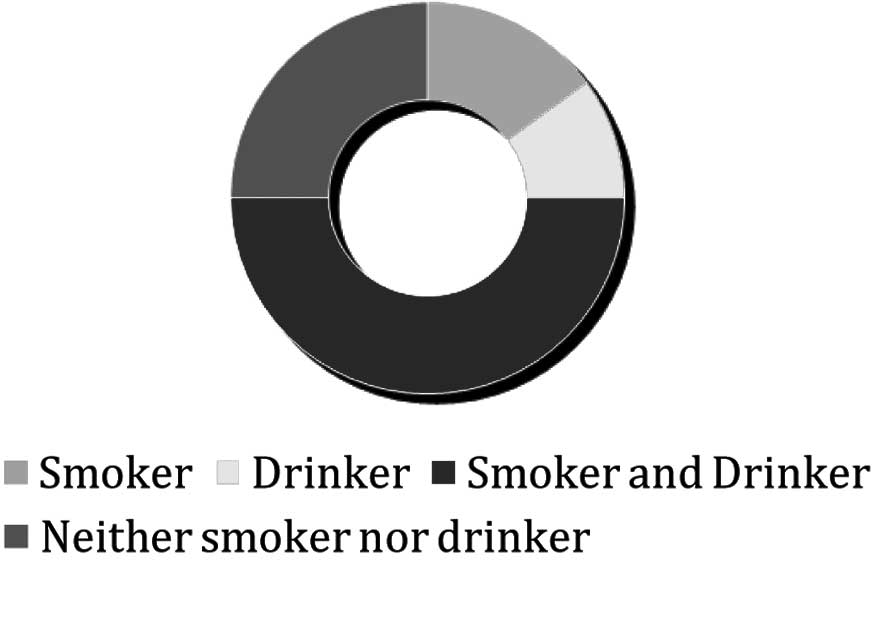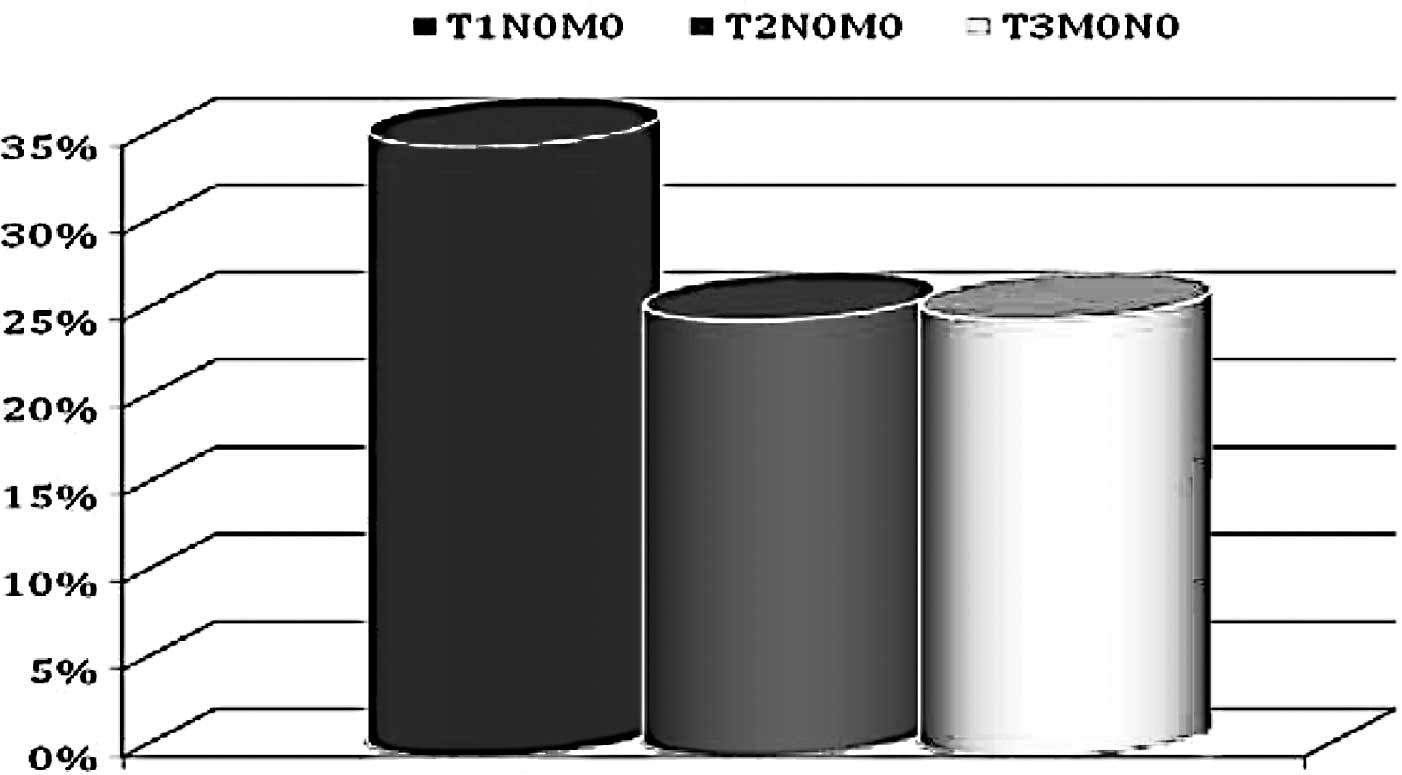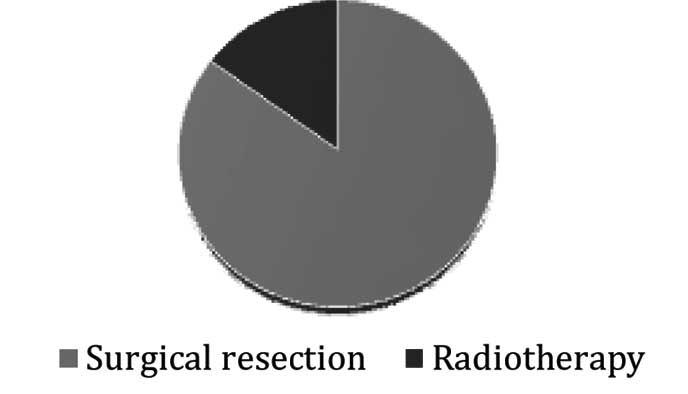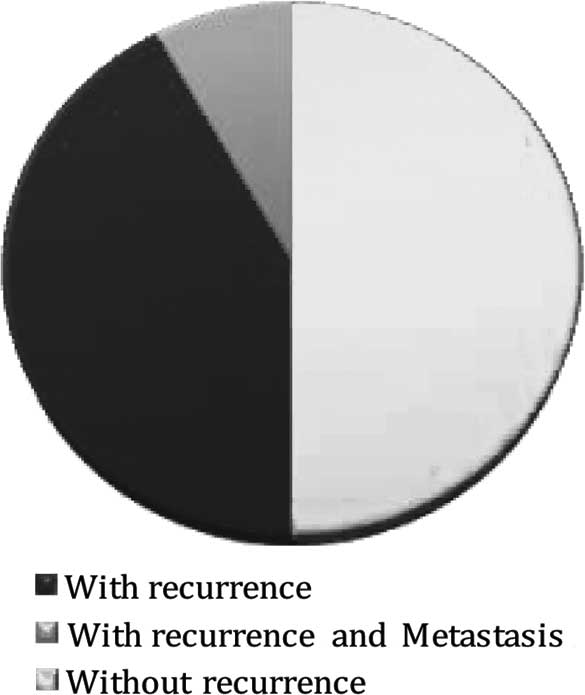Epidemiological study of oral cancer patients in Alava province, Spain
- Authors:
- Published online on: June 17, 2011 https://doi.org/10.3892/etm.2011.289
- Pages: 937-940
Abstract
Introduction
The term cancer includes lesions manifesting a wide range of characteristics which may originate in any cell type of an organism, and each exhibits a distinct behavior and response to treatment. There is believed to be three main types of cancer: carcinomas, sarcomas and lymphomas/leukemias; 90% of human cancers are carcinomas of epithelial origin and 8% are leukemias or lymphomas which arise in blood stem cells and the immune system, respectively, while sarcomas are solid tumors of the connective tissue. Although hundreds of different types of neoplasia have been described, only a few are reported with relative frequency. Thirteen sites represent 85% of the total cancer incidence, notably the prostate, breast and colon. Carcinoma of the lung is by far the most lethal and is responsible for 30% of cancer-related deaths.
The World Health Organization (WHO) International Classification of Diseases defines oral cancer as a neoplasm arising in the lips, oral cavity, oropharynx, nasopharynx or hypopharynx. Oral squamous cell carcinoma (OSSC) is considered the fifth most frequent cancer among males worldwide and the seventh among females, with a prevalence that varies widely from 2–4% of all malignant tumors in the US, Europe and Australia to 30% of those in southern Asia (1). OSSC represents 3–5% of all malignant tumors in Spain, but this proportion is rising; the prevalence is generally higher than the European mean, particularly for tongue and mouth cancers, although oropharyngeal cancers are less frequent in Spain. Within Spain, the frequency of cases is higher in northern vs. southern provinces and highest in the Basque Country and Asturias.
Alongside Calvados in France, the Basque Country has the highest rates in Europe, with an estimated rate of 13.24 cases per 100,000 inhabitants (2). The accumulated incidence (0–74 years; per 100) was 0.54 in males and 0.04 in females for tongue cancer, and 0.59 in males and 0.06 in females for oral cancer. Alava is a province in the Basque autonomous community.
Apart from the lips, where the maximum incidence is recorded, the most frequently involved site is the tongue (25.1%), followed by the floor of the mouth (10.2%) (3).
The etiology of oral cancer is unknown. Various agents have been implicated in its development, either by directly affecting the mucosa or by increasing its sensitivity to oncogenic viruses or other carcinogenic agents. The combination of external and internal (intrinsic) factors appears to magnify their potential to induce the initial irreversible change (initiation), which only gives rise to a tumor when cell division is stimulated. Known etiological factors include tobacco, alcohol, genetic susceptibility, infectious agents, radiation, pre-cancerous lesions, nutrition, and oral and occupational factors.
The aberrant function of cell control mechanisms leads to the uncontrolled division of cancer cells, which spread to the rest of the organism and interfere with the function of normal tissues where they occur. Although knowledge of the cellular and molecular mechanisms involved is far from complete, an increasing number of molecules are known to be implicated in the development of cancer. Many of these are key proteins in cell cycle regulation and programmed cell death (apoptosis).
The cell cycle involves a sequence of processes by which a cell duplicates during the M phase for nuclear division (mitosis) and cytokinesis. The G1 phase is the interval before the start of DNA synthesis; the S phase is when the cell duplicates its DNA content. Finally, the G2 phase is the interval between the end of the S phase and the start of new mitosis.
The duration of these four phases widely varies among different cell types. A rapidly proliferative human cell completes its cycle in 24 h, with 11 h for the G1 phase, 8 for the S phase, 4 for the G2 phase and ∼1 h for M phase. However, certain cells of the organism never change; they leave G1 and enter a cell cycle stage designated G0, in which they remain metabolically active, but do not divide unless they are specifically stimulated by extracellular signals (4).
Materials and methods
Data collection
A protocol was established for the collection of the clinical data considered to have greater prognostic value. A specifically designed form was completed for each patient to gather the following data: clinical record no., age, gender, smoking habits, drinking habits, state of the mouth, reason for consultation, disease localization and gross appearance, tumor size (0–1 cm; >1–3 cm; >3 cm), the presence of adenopathies, disease located in the tongue with no bone involvement, in the tongue with bone involvement, in the retromolar trigone or in the hard/soft palate, tumor stage, treatment, disease course and degree of differentiation.
Inclusion and exclusion criteria
Inclusion criteria were the presence of OSSC, no previous visit to a medical centre for this condition, no lymph node metastasis at diagnosis (stages I or II), and no previous radiotherapy, chemotherapy or surgical treatments. Exclusion criteria were incomplete clinical records (missing either affiliation or clinical data), uncertainty about the oral localization of the primary tumor, inadequate diagnostic material in blocks, and death of the patient from another cause preventing evaluation of disease progression.
Results
The mean age of the 30 patients (25 males) was 59.15 years (range 28–91); the age distribution is depicted in Fig. 1. The most frequent reason for the initial visit was pain on swallowing (Fig. 2), and the most frequent site was the tongue (Fig. 3). The mean tumor size was 2.21 cm (Fig. 4). The most frequent risk factors were tobacco and alcohol, which were both used by 50% of the patients (Fig. 5). The most frequent stage was T1N0M0, in 35% of the patients (Fig. 6). The treatment was surgical resection in the majority of cases (85%), while adjuvant radiotherapy was also applied in several cases (15%) (Fig. 7). Half of the patients did not present with recurrence, while a small number (10%) presented with recurrence and metastasis (Fig. 8).
Discussion
In this series of OSCC patients, the disease was most frequently detected in the sixth decade of life and in males, as previously reported (2,3). The site was the tongue in 70% of the patients, explaining why pain on swallowing was the most frequent reason for admission. The mean tumor size was 2.21 cm and ranged from 1 to 2 cm in the majority of cases, although a number of them were 3–4 cm. Among the risk factors, half of our sample used both tobacco and alcohol, suggesting that a preventive and educational approach may assist control of this disease (Fig. 6). The most common tumor stage was T1N0M0, although stages T2 and T3 were also frequent. Surgical resection was the treatment of choice, while adjuvant radiotherapy was also used (Fig. 7). Half of the patients in our series did not present with recurrence.
In conclusion, the most frequent age at OSCC onset was 61–77 years with the disease being more prevalent in males. The most prevalent risk factors were found to be tobacco and alcohol. The most frequent reason for hospital admission was pain on swallowing with the tongue being the most frequent site. The mean tumor size was 2.21 cm, and the most frequently presented stage was T1N0M0. Surgical resection was the treatment of choice. Patient outcomes were similar between patients with recurrent and non-recurrent disease.
References
|
Chandu A, Adams G and Smith ASH: Factors affecting survival on patients with oral cancer: an Australian perspective. Int J Oral Maxiloofac Surg. 34:514–520. 2005. View Article : Google Scholar | |
|
Moreno López LA and Esparza Gómez G: Oral cancer versus orpharyngeal cancer versus head and neck cancer. Oral Oncol. 34:576–577. 1998.PubMed/NCBI | |
|
Martínez-Conde R, Aguirre JM, Burgos JJ and Rivera JM: Clinicopathological factors in early squamous cell carcinoma of the tongue and floor of the mouth in Biscay (the Basque Country, Spain). Med Oral. 6:87–94. 2001.PubMed/NCBI | |
|
Tood R, Hinds PW, Munger K, Rustgi AK, Opitz OG, Suliman Y and Wong DT: Cell cycle dysregulation in oral cancer. Crit Rev Oral Biol Med. 13:51–61. 2002. View Article : Google Scholar : PubMed/NCBI |



